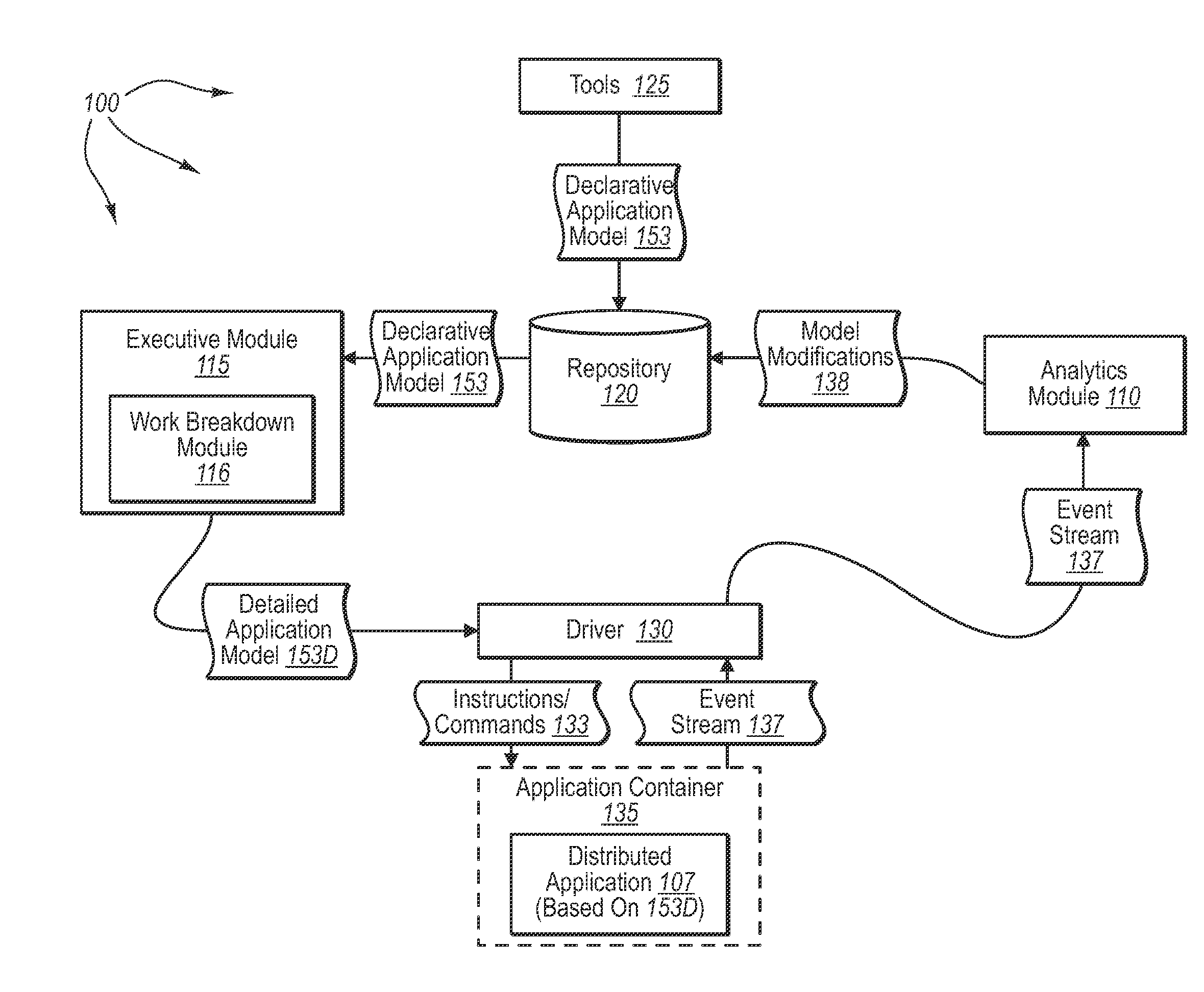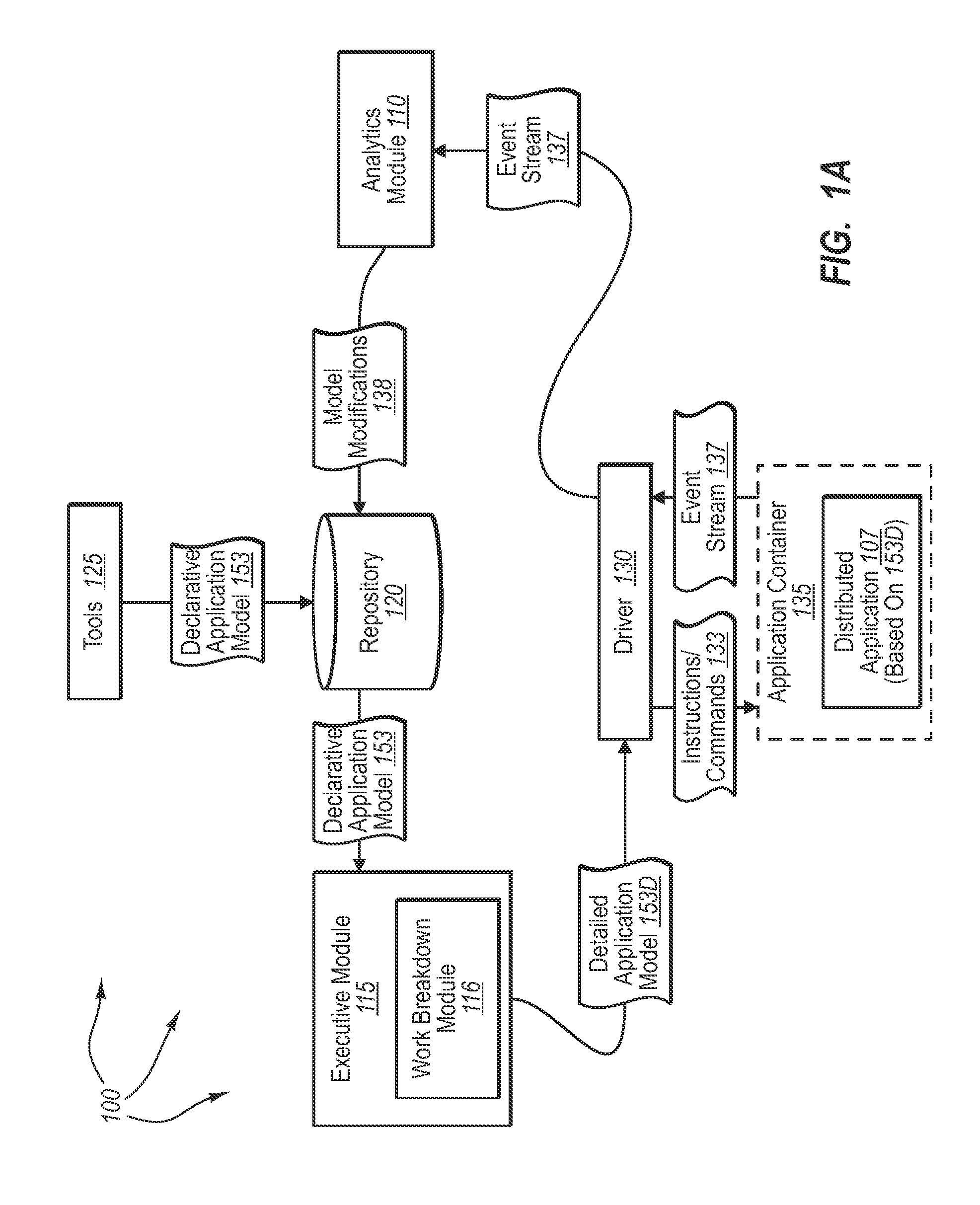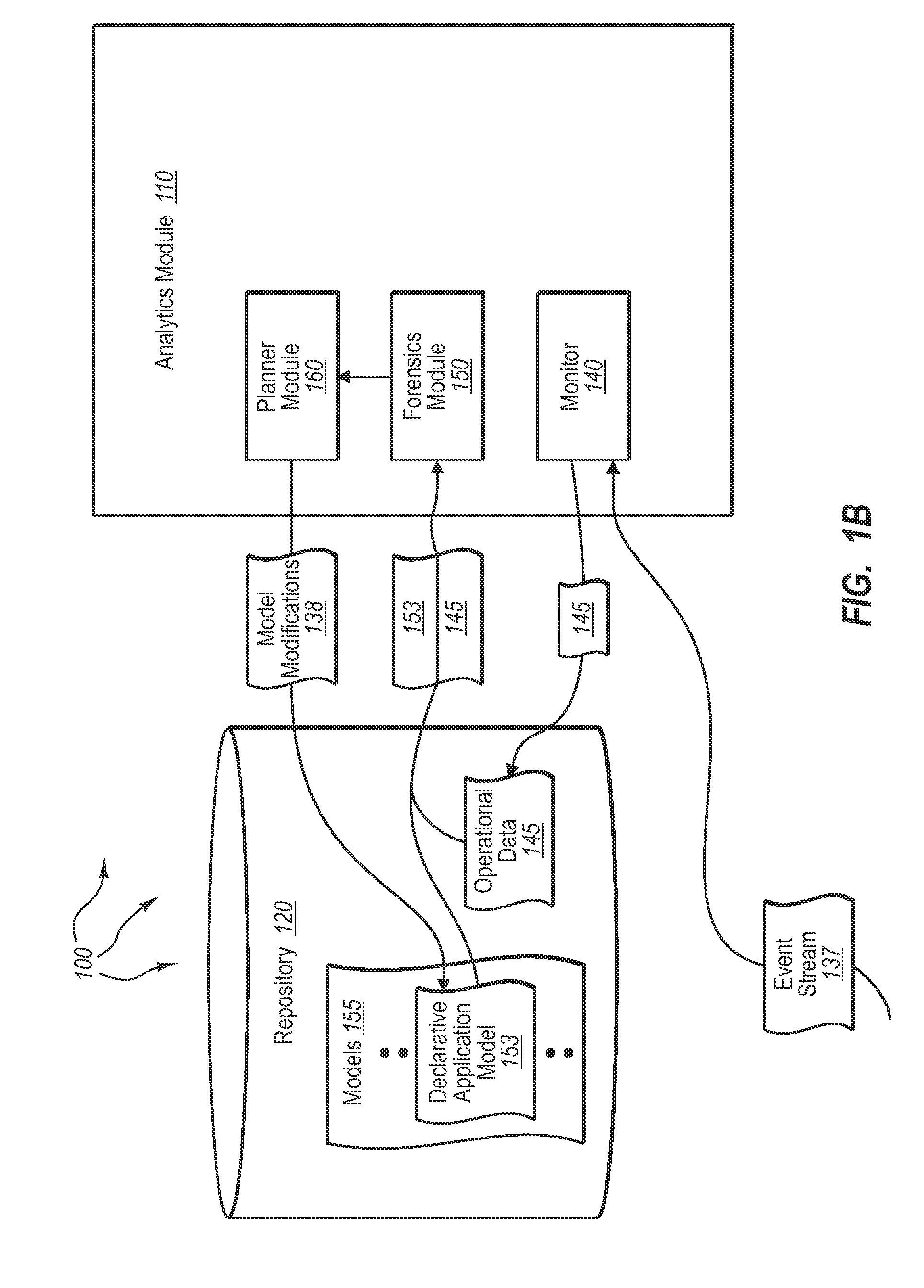As computerized systems have increased in popularity, so have the complexity of the
software and hardware employed within such systems.
In general, the need for seemingly more complex
software continues to grow, which further tends to be one of the forces that push greater development of hardware.
For example, if application programs require too much of a given hardware
system, the hardware system can operate inefficiently, or otherwise be unable to process the application program at all.
Unfortunately, conventional distributed application servers are typically ill-equipped (or not equipped at all) to automatically
handle and manage all of the different complexities associated with distributed application.
Such accommodations, however, can be difficult if not impossible to do with conventional distributed
application server platforms.
Specifically, most conventional distributed
application server platforms are ill-equipped or otherwise unable to identify and properly manage different demand patterns between components of a distributed application program.
This is due at least partly to the complexity in managing application programs that can have many distributed components and subsystems, many of which are long-running workflows, and / or otherwise legacy or external systems.
In addition, conventional distributed application program servers are generally not configured for efficient
scalability.
As such, when an administrator desires to redeploy certain modules or components onto another
server or set of computer systems, there is always some (and potentially a significant) possibility of redeployment causing errors to occur (e.g., due to differences in network protocols, system configurations, etc.) These errors can result when messages are not passed onward everywhere they are needed, or if they are passed onward incorrectly.
Due to these and other complexities, distributed application programs tend to be fairly sensitive to sharply increasing demands (i.e., demand spikes).
For example, sharply increasing demands can cause various distributed application modules to operate at a sub-optimum level for significant periods of time before the sub-optimum performance is detected.
In some cases, an administrator (depending on skill and experience) may not even attempt corrective action, since improperly implemented corrective action can cause further operational problems.
Thus, a distributed
application module could potentially become stuck in a pattern of inefficient operation, such as continually rebooting itself, without ever getting corrected during the lifetime of the distributed application program.
However, these monitoring techniques suffer from a variety of inefficiencies.
Unfortunately, since the
instrumentation code is essentially built into the distributed application there is little, if any, mechanism that can be used to regulate the type, frequency, and contents of produced events.
As a result of the inability to regulate produced monitoring events, there is typically no way during execution of distributed application to adjust produced monitoring events (e.g., event types, frequencies, and content) for a particular purpose.
Thus, it can be difficult to dynamically configure a distributed application to produce monitoring events in a manner that assists in monitoring and correcting a specific undesirable application behavior.
Further, the
monitoring system itself, through the unregulated production of monitoring events, can aggravate or compound existing distributed application problems.
For example, the production of monitoring events can consume significant resources at worker machines and can place more messages on connections that are already operating near capacity.
However, monitoring modules typically lack any ability to alter distributed application configuration, at least due to the
instrumentation code being built into the distributed application.
Thus, filtering typically occurs near the end of the monitoring process and can not be used to reduce the consumption of worker
machine resources and / or network capacity associated with the production of monitoring events.
Additionally, when
source code for a distributed application is compiled (or otherwise converted to
machine-readable code), a majority of the operating intent of the distributed application is lost.
Thus, a monitoring module has limited, if any, knowledge, of the intended operating behavior of a distributed application when it monitors the distributed application.
Accordingly, during distributed application execution, it is often difficult for a monitoring module to determine if undesirable behavior is in fact occurring.
However, this provides the monitoring module with limited and often incomplete knowledge of the intended application behavior.
However, based on information from received monitoring events, it can be difficult, if not impossible, for a monitor module to determine that the production of seven messages a second is not intended.
 Login to View More
Login to View More  Login to View More
Login to View More 


